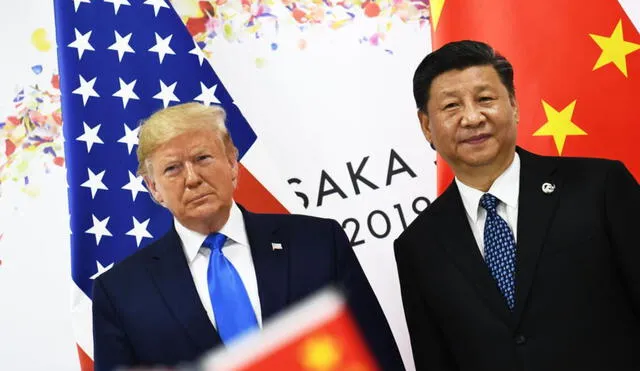With Trump's policies shaking the world, China seeks leadership as a stable force
On March 8, Chinese leader Xi Jinping send the U.S. a message during a plenary session of the National People's Congress at the Great Hall of the People in Beijing.

Last week, President Donald Trump increased economic pressure on China, and Beijing now sent its own message: its rise will not be interrupted. An important political meeting taking place in the capital was the ideal setting for a fiery response. The “two sessions” meeting of China's legislature and its highest political advisory body is where the Government reveals its plans and sets the tone for the year ahead.
While Trump delivered a divisive speech to a joint session of Congress last week, a markedly different political event unfolded across the globe. The National People's Congress (NPC), China's annual parliamentary gathering, began on March 5, in Beijing, showcasing China's strategic positioning as a beacon of stability in a tumultuous world.

ALSO SEE: Understanding the USMCA agreement: Why Trump gave another extension to Sheinbaum over Mexico tariffs
China's emphasis on stability amid global uncertainty
The NPC, known for its meticulous orchestration with decisions pre-approved by the ruling Chinese Communist Party, offers insights into China's domestic priorities and international strategy. This year's session highlighted China's intent to present itself as a pillar of stability, especially as global dynamics shift due to U.S. policy changes.
Foreign Minister Wang Yi, during his annual press conference, underscored this theme by emphasizing “stability” multiple times. He addressed the recent escalation in U.S.-China trade tensions, notably the Trump administration's decision to double tariffs on Chinese imports to 20% as of March 4. Wang criticized the U.S.'s “two-faced” approach, stating, “No country should expect to suppress and contain China on one hand while developing good relations with China on the other.”
China's measured response to escalating trade tensions
In retaliation to the heightened U.S. tariffs, China implemented targeted measures, including:
- Tariffs: Imposing a 15% tariff on U.S. agricultural products such as chicken, wheat, corn, and cotton, and a 10% tariff on sorghum, soybeans, pork, beef, aquatic products, fruits, vegetables, and dairy products, effective March 10, 2025.
- Regulatory actions: Launching an antitrust investigation into Google and adding companies like PVH Corp. and Illumina to the Unreliable Entity List.
These responses reflect China's strategy to defend its national interests while avoiding overt escalation. Experts note that Beijing aims to maintain a firm stance without appearing alarmist, a tactic to counteract U.S. pressure without derailing potential negotiations.
China's commitment to steady growth
Despite external pressures, China remains focused on its domestic agenda. The government has set a GDP growth target of approximately 5% for 2025, mirroring the previous year's goal. Defense spending is projected to increase by 7.2%, consistent with last year's figures. Premier Li Qiang, in his government work report, acknowledged global challenges such as rising unilateralism and protectionism. He reiterated China's commitment to opening up and collaborating with the international community to promote a multipolar world order.
Li also addressed domestic economic challenges, including a persistent property crisis, high youth unemployment, and sluggish consumer spending. He emphasized the need to bolster trade relationships and expand high-standard free trade areas to sustain China's export-dependent economy.











